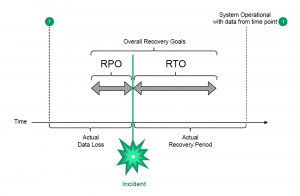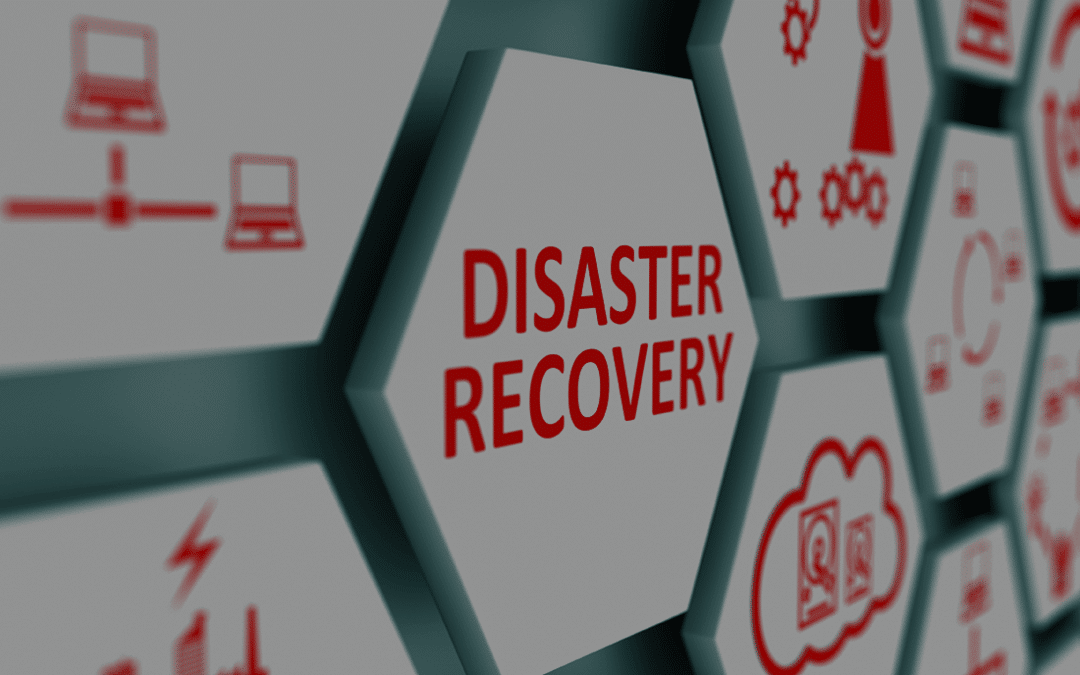The most important asset that businesses own is data. Data is the backbone of every department and is integral to the day to day functioning of organizations. Financials, SCM, HR, and CRM are all integral functions that generate data to optimize the operational capabilities of the organization, improve the planning and allocation of resources. Most organizations store their data on the cloud or data centers on-premises to ensure that it is securely managed by data experts. Moving data to the cloud is an efficient technological solution that improves the data management capabilities of enterprises.
Traditional cloud disaster recovery backs up data from applications to alternate data centers. According to a study done by the University of Texas, “94% of companies suffering from a catastrophic data loss do not survive – 43% never reopen and 51% close within two years.” Failure in any part of business processes can translate to a significant loss of productivity, revenue, reputation, and in some cases, customers. Cloud Disaster recovery has an edge over traditional disaster recovery as organizations do not need to build a secondary physical site and buy additional hardware and software to support critical operations. Depending on current business demands, cloud computing resources can be easily scaled up or down as required. Disaster recovery in cloud computing can be performed easily by migrating copies of data to the cloud. Backed up data can be stored across multiple geographical locations, which eliminates a single point of failure, essentially a backup copy is present even if one of the data centers fails.
Disaster Recovery methods can be customized for backups to be active as required. For example, an active-active offering hosts a hot site, which mirrors the processes and systems. The load is synchronously shared between the system and the site, which means that when disasters occur the backup is instantly available. An active-passive setup offers a warm site, which basically ensures that core processes are constantly backed up and available instantly when a disaster occurs but the site may experience some delay. This is a lower-cost option suitable for secondary processes. Applications that are not mission-critical and need not be recovered instantly can be stored in a cold site in an active-replicated setup. This is the most budget-friendly setup which can be used to store data that may not be accessed often but recovery times will take longer.
It is difficult to predict when failures can occur and how serious its impact will be. However, planning disaster response can help enterprises successfully recover from the potentially disastrous consequences. When disasters occur, DR ensures that the affected data, applications, and other resources are stored in the cloud so that enterprises can resume operations normally without any loss of data or performance.
Disaster recovery is essential to Business Continuity planning. Business Continuity refers to the technological contingencies put in place to ensure that business operations can resume without delay and difficulty following any incident that could disrupt business. Disaster recovery plays a pivotal role as there could be a disruption in services due to floods, earthquakes, or cyberattacks. Organizations must analyze cases that would pose a potential risk in order to formulate a mitigation plan.
Changing times have brought about new threats and possibilities of unforeseen breakdowns of the technological infrastructure of enterprises. In the current fast-evolving technological landscape there is a significant increase in security issues such as cyberattacks. There will always be uncertainty as to which events can potentially damage data storage and hamper the activities of enterprises and when these could potentially occur. With new technological solutions supporting data functionalities in enterprises, Disaster Recovery systems are essential to efficiently manage data.
UnitedLayer’s Hybrid Cloud Disaster Recovery solution enables enterprises to be resilient, respond to critical situations faster, and recovers their data from all the sources. Operate on your business-critical data requirements without any interruptions or unscheduled downtimes. Our DR solutions are highly customizable, with solutions for business continuity with sub-one-minute time where customers can build specific Recovery Point Objectives (RPO) and Recovery Time Objectives (RTO) according to their business requirements.

Overall Recovery Goals
UnitedLayer’s state-of-the-art network infrastructure ensures that any issues or errors can be quickly identified and taken care of by the expert support and managed DR services that we offer. Moreover, 24*7*365 support and maintenance are provided to data stored on the UnitedLayer infrastructure, including hardware and software upgrades. On-demand scalability enables you to add additional resources to meet the increased replication needs, this helps in reducing cost and improve business flexibility. UnitedLayer’s DR solutions are highly secure and compliant to all the industry-leading compliance standards like HIPAA and PCI.
Sign up today for a free demonstration and explore the services and features offered by UnitedLayer.


